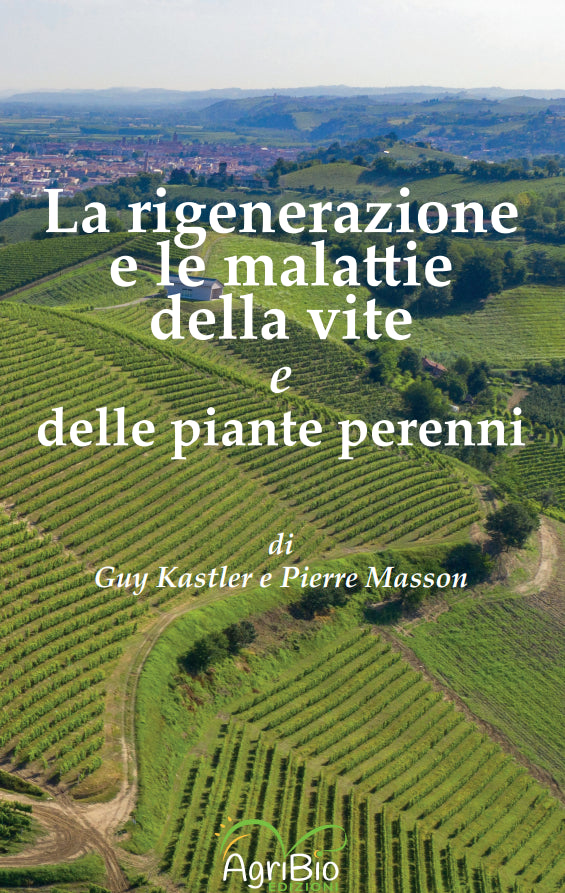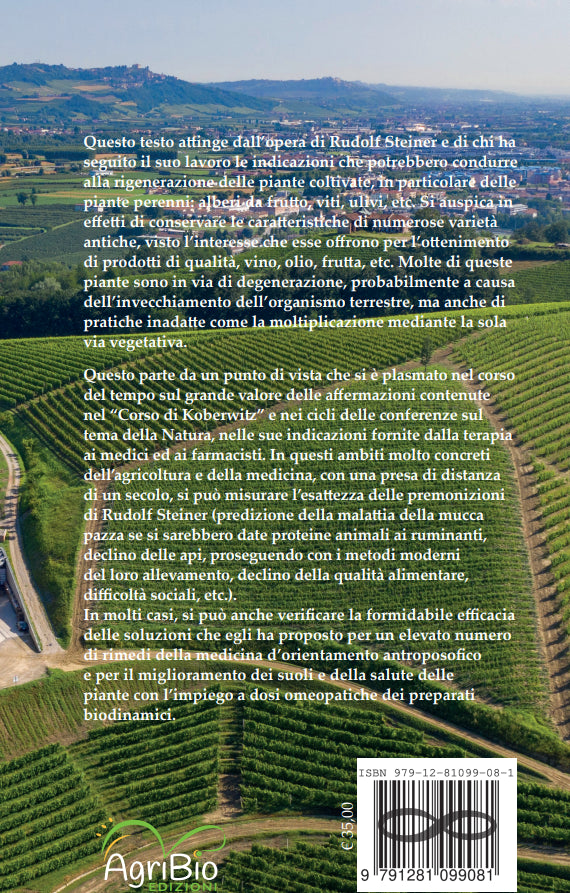REGENERATION AND DISEASES OF VINE AND PERENNIAL PLANTS - Guy Kastler / Pierre Masson
Have a question?
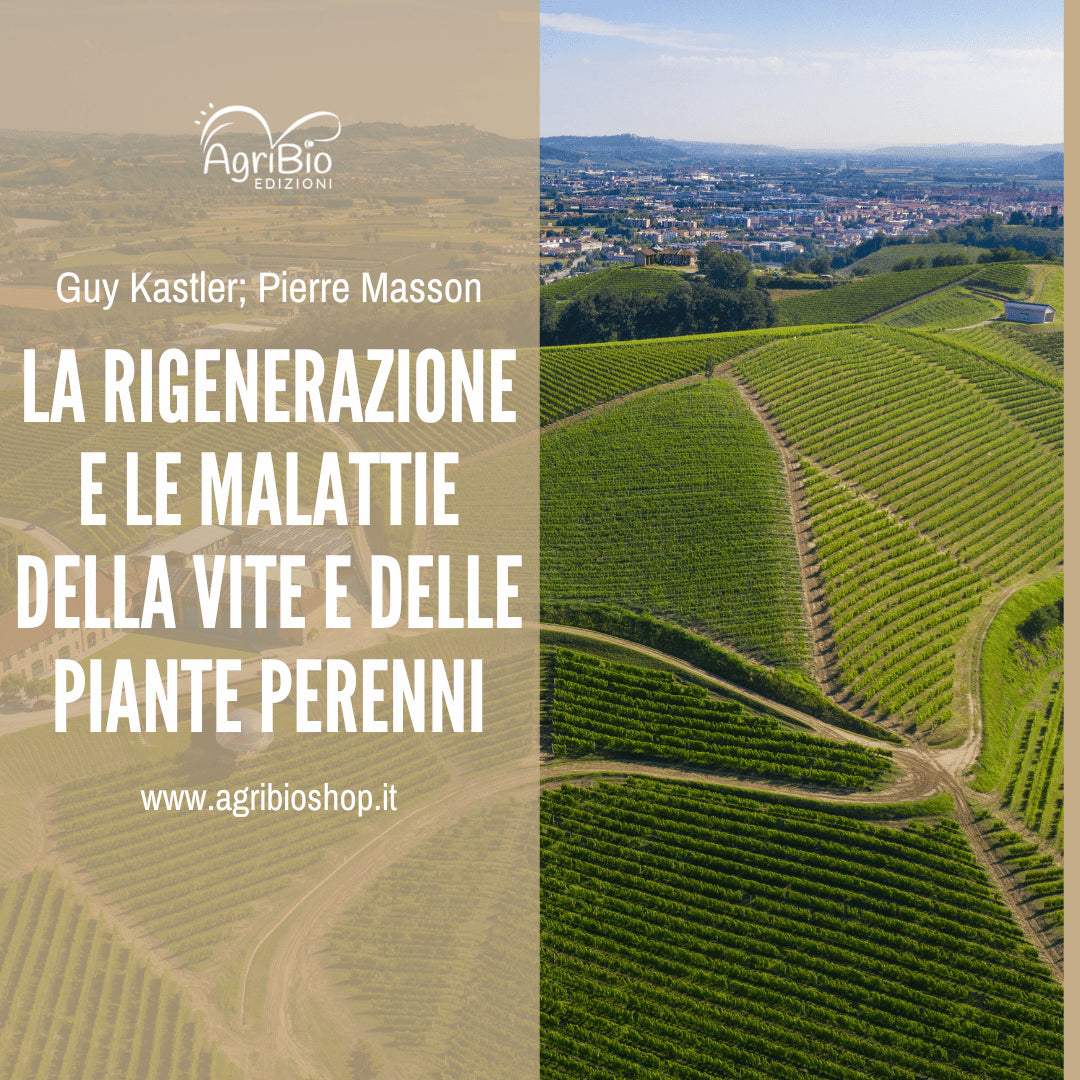
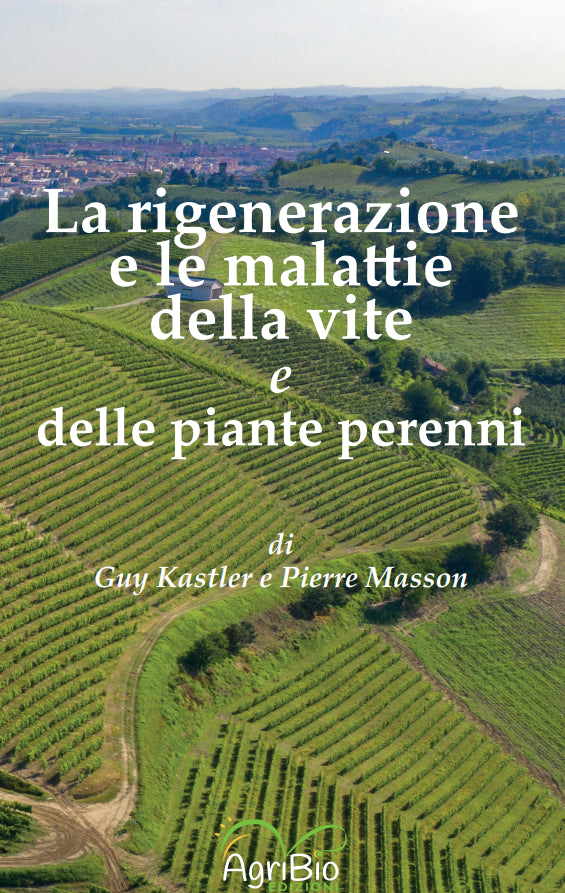

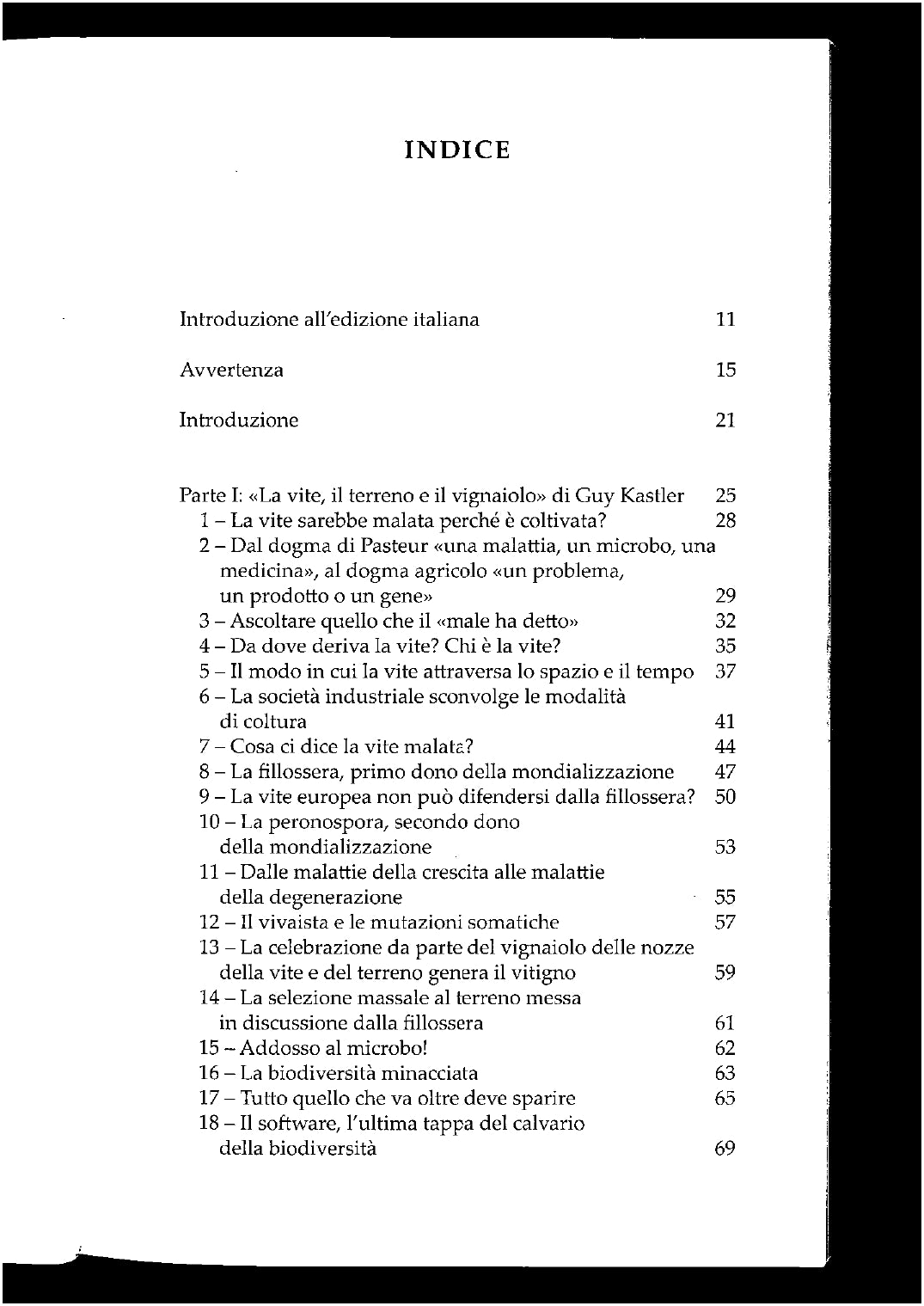


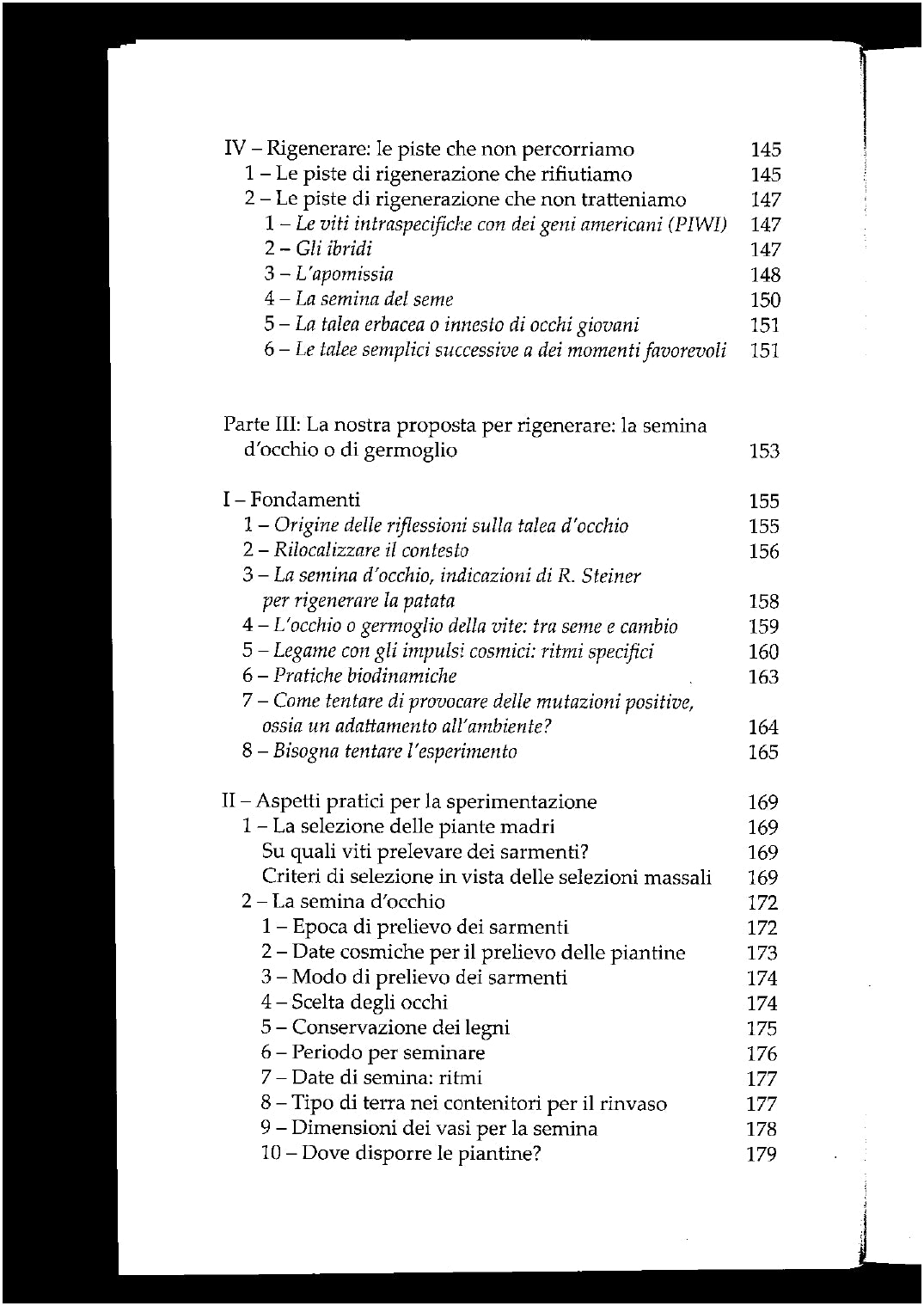
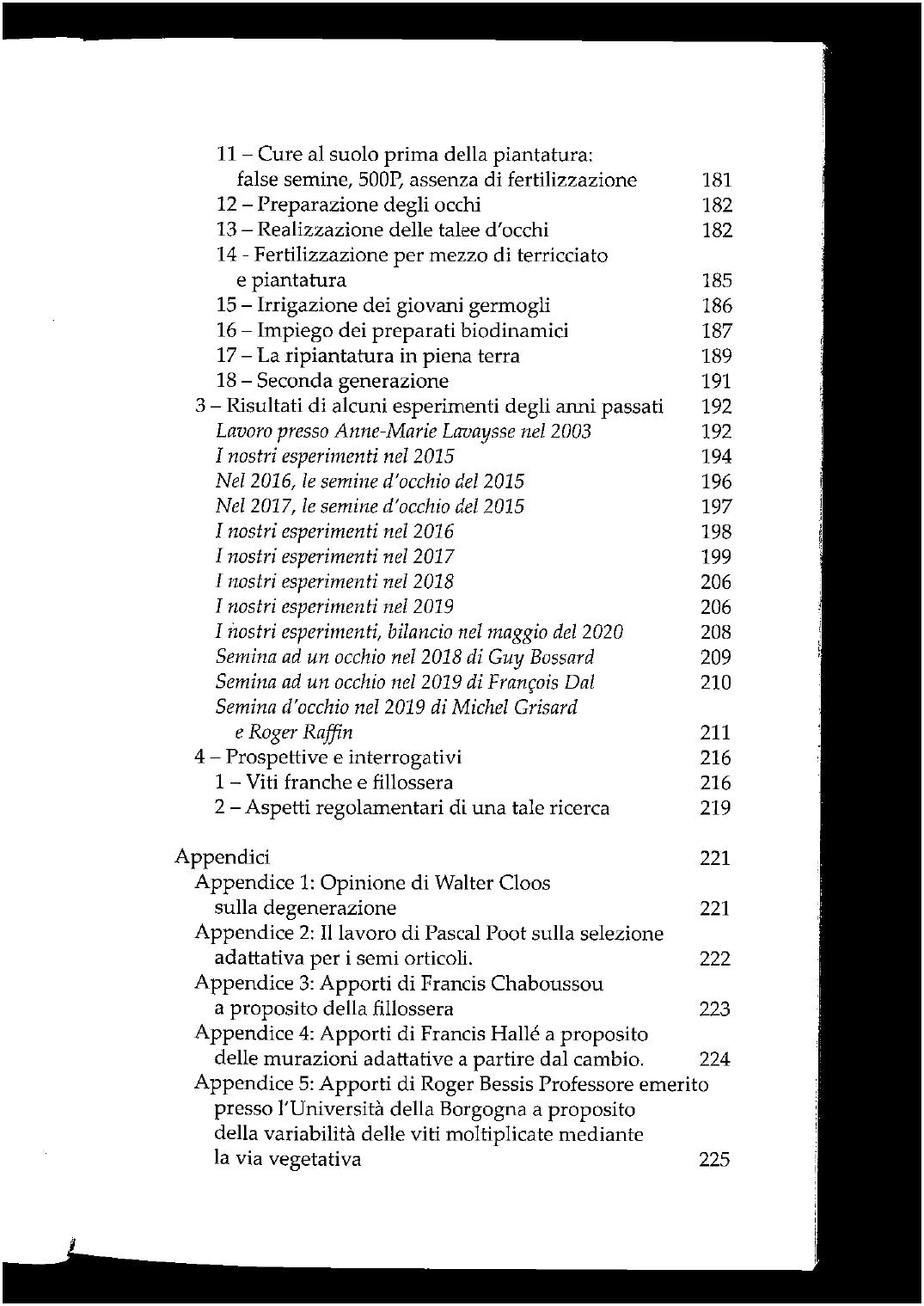

REGENERATION AND DISEASES OF VINE AND PERENNIAL PLANTS - Guy Kastler / Pierre Masson
Dettagli
This text draws from the work of Rudolf Steiner and those who followed his work for indications that could lead to the regeneration of cultivated plants, in particular perennial plants: fruit trees, vines, olive trees, etc. In fact, it is hoped to preserve the characteristics of numerous ancient varieties, given the interest they offer for obtaining quality products, wine, oil, fruit, etc. Many of these plants are in the process of degeneration, probably due to the aging of the terrestrial organism, but also to unsuitable practices such as multiplication through the vegetative way alone
INDEX
Warning 6
Introduction 9
Part I: «The vine, the soil and the winemaker» by Guy Kastler 11
1 – IS THE VINE SICK BECAUSE IT IS CULTIVATED? 14
2 – FROM THE PASTEURIAN DOGMA «A DISEASE, A MICROBE, A MEDICINE», TO THE AGRICULTURAL DOGMA «A PROBLEM, A PRODUCT OR A GENE». 15
3 – LISTENING TO WHAT THE «EVIL HAS SAID» 17
4 – WHERE DOES THE VINE COME FROM? WHO IS THE VINE? 19
5 – THE WAY THE VINE CROSSES SPACE AND TIME 21
6 – INDUSTRIAL SOCIETY DISTURBING CULTIVATION METHODS 23
7 – WHAT DOES THE SICK VINE TELL US? 25
8 – PHYLLOXERA, THE FIRST GIFT OF GLOBALIZATION 28
9 – THE EUROPEAN VINE WITHOUT DEFENSE IN THE FACE OF PHYLLOXERA? 30
10 – PERONOBLE, SECOND GIFT OF GLOBALIZATION 31
11 – FROM GROWTH DISEASES TO DEGENERATION DISEASES33
12 – THE NURSERYMAN AND SOMATIC MUTATIONS 34
13 – THE WINEMAKER'S CELEBRATION OF THE MARRIAGE OF THE VINE AND THE SOIL CREATES THE VINE 36
14 – MASS SELECTION IN THE TERRITORY CALLED INTO DISCUSSION BY PHYLLOXERA 37
15 – ON TO THE MICROBE! 38
16 – BIODIVERSITY THREATENED 39
17 – EVERYTHING THAT GOES BEYOND MUST DISAPPEAR 40
18 – THE SOFTWARE, LAST STAGE OF THE CALVARY OF BIODIVERSITY43
19 – DOES THE VARIETY ALSO HIDE IN THE MICROBIAL ENVIRONMENT? 44
20 – THE METHODICAL ORGANIZATION OF DEGENERATION 45
21 – VINE ESCA SICKNESS, DISEASE OF THE INDUSTRIALIZATION OF NURSERY 47
22 – FLAVESCENZA DORATA, THE SPLEEN OF A VINE THAT NO LONGER WANTS TO CONTINUE THIS LIFE 47
23 – AFTER THE VINE, SULFUR INVADES THE WINE 49
24 – THE SICK VINE MAKES MAN SICK50
25 – ERADICATE OR LIVE WITH 52
26 – THE HEALTH OF THE VINE IS THE HEALTH OF THE MAN WHO DRINKS WINE 53
27 – THE VINE NEEDS TO DISCUSS WITH WHAT SURROUNDS IT 54
28 – RETURN THE VINE TO ITS TERRITORY 55
29 – A sort of provisional conclusion: LONG LIVE THE END OF THE CRISIS! 58
BIBLIOGRAPHY 60
Part II: Work lines for vine regeneration 62
I – The notions of "degeneration" and "regeneration" of cultivated plants 62
1 – Historical preview 62
2 – For the vine, where are we in the biodynamic framework? 63
3 – A basis, the work «Reflections on the degeneration of the living» 65
4 – Some elements on the topic of degeneration phenomena seen by botanists and vine professionals66
5 – For the vine, practices that pose problems 67
6 – Positive but not sufficient practices 68
II – Issues related to plant exchanges between continents, the east-west problem - Pierre Masson69
1 – Terracing of vegetation and behavior of cultivated plants 69
2 – The first transfers of vegetation: from east to west 70
3 – Going West: travel impressions 70
4 – Transfers of vegetation, from west to east 72
4 – 1 post-Columbian crops and current world agriculture 72
4 – 2 post-Columbian cultures 72
a – On a garden and horticulture scale 72
b – On the scale of large crops, some examples 74
c – On the scale of industrial plant crops, some examples 75
d – The screw 75
e – The case of ornamental plants 76
4 – 3 Imported forest or ornamental trees: some examples 76
5 – The case of parasites and adventitious plants 80
5 – 1 Adventitious plants 80
5 – 2 The case of the screw 80
5 – 3 The devastators: insects, fungi and bacteria 81
6 – Transfers in the animal kingdom, from west to east 81
6 – 1 Some observations 81
a – The dimensions of the animal species present on the American continent 81
b – The importation of unwanted American animal species 81
6 – 2 The problem of domestic cattle breeds 81
6 – 3 Other transfers…and human beings? 82
7 – Consequences for the future of agriculture 82
III – The contributions and questions derived from the work of Rudolf Steiner and from anthroposophical sources 85
1 – Some comments and some indications starting from the quotes by R. Steiner 85
1 – On the topic of the American continent and relocalization in the territories 85
2 – On the topic of the formation of the seed, of the agricultural organism, of what is established in a specific place 86
3 – On the topic of vines and wine 89
4 – On the topic of relationships between woody plants and distant planets 92
5 – On the topic of the individual relationship with the seed 92
6 – Regeneration, change and lime whitening. ninety two
7 – Fertilization, male principle, female principle 94
8 – Point of view of W. Pelikan 94
2 – What to do with this information? Synthesis and work paths for regeneration 95
IV – Regenerate: the paths we don't travel 97
1 – The regeneration paths that we refuse 97
2 – The regeneration paths that we do not hold back 99
1 – Intraspecific vines with American genes (PIWI) 99
2 – Hybrids 99
3 – The apomixis 99
4 – Sowing the seed100
5 – The herbaceous cutting or grafting of young eyes 101
6 – Simple cuttings following favorable moments 101
Our proposal for regeneration: eye or shoot sowing 102
I – Fundamentals 102
1 – Origin of the reflections on the eye cutting 102
2 – Relocalize the context 103
3 – Eye sowing, R. Steiner's indications for regenerating the potato 104
4 – The eye or bud of the vine: between seed and change 105
5 – Link with cosmic impulses: specific rhythms 106
6 – Biodynamic practices 108
7 – How can we try to cause positive mutations, i.e. an adaptation to the environment? 108
8 – Experiment 109 must be attempted
II – Practical aspects for experimentation 111
1 – The selection of mother plants 111
From which vineyards should the prunings be taken? 111
Selection criteria in view of mass selections. 111
2 – The sowing of the eye 113
1 – Period of removal of the prunings 113
2 – Cosmic dates for eye sampling 114
3 – Method of removing the prunings 115
4 – Choice of eyes 115
5 – Wood conservation 116
6 – Period for sowing 117
7 – Sowing dates: rhythms 117
8 – Type of soil in repotting containers 118
9 – Size of pots for sowing 118
10 – Where to place the seeds? 119
11 – Soil care before planting: false sowing, 500P, absence of fertilization 121
12 – Preparation of the eyes 121
13 – Making eye cuttings 122
14 – Fertilization by means of compost and planting 124
15 – Irrigation of young shoots 125
16 – Use of biodynamic preparations 126
17 – Replanting in open ground 127
18 – Second generation 128
3 – Results of some experiments from past years 129
I work at Anne-Marie Lavaysse in 2003 129
Our experiments in 2015 131
In 2016, 2015 eye sowings 134
In 2017, 2015 eye sowings 135
Our experiments in 2016 136
Our experiments in 2017 138
Our experiments in 2018 141
Our experiments in 2019 143
Our experiments, balance sheet in May 2020 145
Sowing in one eye in 2018 by Guy Bossard 146
Sowing with one eye in 2019 by François Dal 147
Sowing an eye in 2019 by Michel Grisard and Roger Raffin 148
4 – Perspectives and questions 152
1 – Free vineyards and phylloxera 152
2 – Regulatory aspects of such research 154
Appendices 155
Appendix 1: Walter Cloos' opinion on degeneration 155
Appendix 2: Pascal Poot's work on adaptive breeding for horticultural seeds. 155
Appendix 3: Francis Chaboussou's contributions regarding phylloxera156
Appendix 4: Contributions by Francis Hallé regarding adaptive mutations starting from the change157
Appendix 5: Contributions of Roger Bessis Professor Emeritus at the University of Burgundy regarding the variability of multiple vines through the vegetative route 157
Appendix 6: How many vine plants to work with? 158
Appendix 7: Additives that contribute to giving the color of the briar158
Appendix 8: Notes on the topic of Louis Albert's Treatise on the Regeneration of the Vine 160
Appendix 9: Different information about the 161 eye cutting
Appendix 10: Influence of growth hormones according to Jürgen Fritz 164
Appendix 11: Responses to climate and pathogen threats differ in biodynamic and conventional vines 165
BIBLIOGRAPHY 166
Acknowledgments 168



